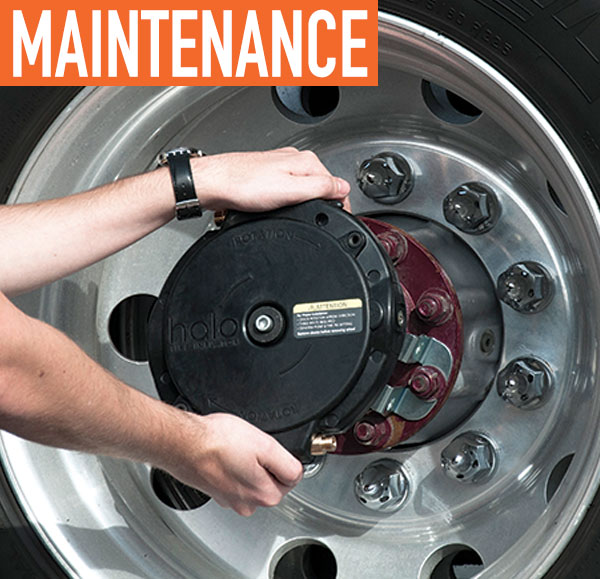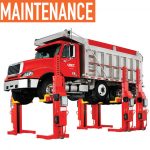The indicators all lead to the same conclusions: By employing tire inflation optimization practices, tread, casing life, and fuel economy are improved; a leading cause of inspection citations and a factor in commercial vehicle crashes are mitigated; and overall costs for fleets are reduced.
“Under-inflated tires on all types of commercial vehicles decrease fuel efficiency; increase downtime, maintenance, and replacement tire costs; and reduce safety,” says Josh Carter, CEO of Aperia—producer of the Halo self-powered, bolt-on inflation technology for trucks, tractors, and trailers. “It doesn’t have to happen, however. By employing automatic tire pressure management technology, fleets can improve fuel economy and extend tire life, boost uptime and safety, and increase profitability through bottom line savings.”
There is ample evidence to support all of those claims, according to Carter, including research by the Federal Motor Carrier Safety Administration (FMCSA) indicating that maintaining proper tire pressure results in a one to two percent fuel efficiency increase. Increasingly stringent fuel economy standards for trucks are driving manufacturers to look for new ways to help improve mpg. The EPA reports that under-inflation, as little as 10 psi, can lead to a reduction in fuel economy between 0.5 and one percent.
“While the fuel economy improvements achieved with optimal inflation are well documented,” Carter says, “the excessive heat buildup in under-inflated tires is also cited as the primary cause of blowouts.” A 2012 report from the National Highway Traffic Safety Administration (NHTSA) says under-inflation is the leading cause of tire failure; FMCSA cites defective tires as one of the top factors in commercial vehicle crashes caused by vehicle defects.
LOWERING COSTS
Beyond improving fuel economy and safety, tire pressure optimization presents an opportunity for commercial vehicle fleets to lower costs and downtime.
“According to FMCSA, under-inflated tires increase casing and tread wear by 10-15 percent, because improper inflation causes excessive sidewall flexing, creating excessive heat and fatigue and accelerating wear and susceptibility to damage,” Carter explains. “Additionally, several reports on tire pressure and maintenance cite tires as a leading cause of inspection violations, adding downtime and cost.”
Even under ideal circumstances, effective manual tire pressure inspection and maintenance, including the lengthy process of taking a pressure reading on every tire, is a challenge for fleet maintenance personnel and drivers. In colder months and climates, Carter also notes, road surface and ambient temperatures impact tire operating pressures.
“Add a 20-degree drop in temperature to regular air loss and tire pressures will fall significantly,” Carter states. “A two to three psi decrease for every drop in temperature of 10 degrees is a factor to contend with during winter months and you can’t just shorten preventive maintenance intervals to check tire pressures more frequently. Even highly motivated drivers and technicians will find tire pressure management in colder weather demanding and more difficult.”
PRESSURE SOLUTIONS
Using automatic tire inflation systems to consistently maintain recommended pressure is a solution that a growing number of fleets are adopting. More than 100 fleets with anywhere from 10 to 10,000 trucks are using or actively testing Aperia’s Halo Tire Inflator, which uses a wheel’s rotation to pump and maintain optimal pressure in tires on any type of vehicle. Halo, which requires only four bolts and two hose connections, can be installed in five to 10 minutes per wheel end.
“We’re building higher volumes every month and still racing to keep up with demand,” Carter says. “That’s proof that proper tire inflation is a challenge that’s proven to be far too important to ignore. Considering the risks and costs associated with under-inflated tires, fleet managers are clearly recognizing the benefits of utilizing technology in their tire pressure management programs.
“Before adopting any automatic tire inflation system, fleets should track tire costs closely to understand the potential benefits of changes to their tire program,” Carter continues. “As a baseline, an assessment of blowout frequency and severity of irregular wear, along with a tire pressure check survey, can greatly help understand the impact and severity of improper inflation. Any ROI calculation is typically focused on costs in the areas of fuel economy, tire life, and downtime, but be sure to look at both single vehicle and fleet-wide cost of acquisition.”
Carter also points out that fleets can easily calculate potential savings from inflation monitoring systems by using online calculators that estimate ROI and account for a range of variables, including vehicle configuration, mileage, fuel economy, the price of fuel, and the number and cost of tires and tire-related service calls.
Fleets can also work with a recently launched, nationwide network of truck and trailer dealers with more than 100 locations that are now offering Halo. “The system is easy to install in a matter of minutes,” says Zach Wagner, COO at Gateway Truck and Refrigeration. “Whether it’s going on a new or existing vehicle, Halo offers an opportunity to a fleet to keep track of its second largest controllable cost, which is tires.”
FOR MORE INFORMATION:
Seth Skydel has more than 30 years of truck-related publication experience. He has held editorial roles at numerous national business-to-business publications focusing on fleet and transportation management, vehicle and information technology, and industry trends and issues.
_______________________________________________________________________
MODERN WORKTRUCK SOLUTIONS: FEBRUARY 2016 ISSUE
Did you enjoy this article?
Subscribe to the FREE Digital Edition of Modern WorkTruck Solutions magazine.
![]()





